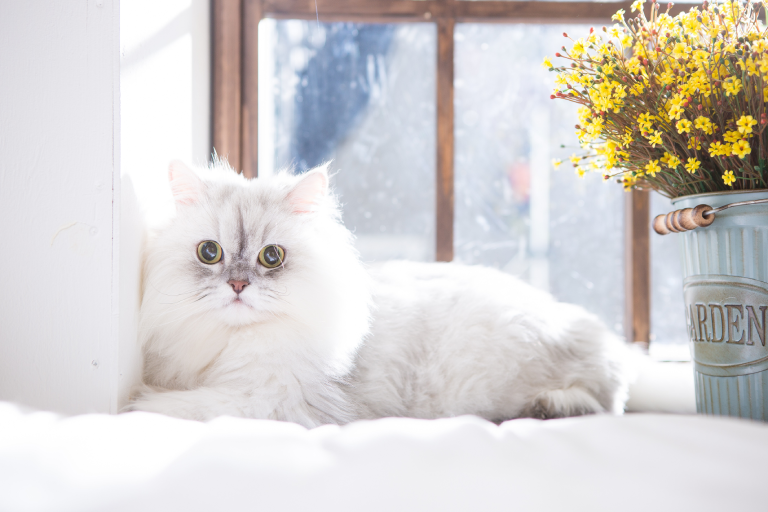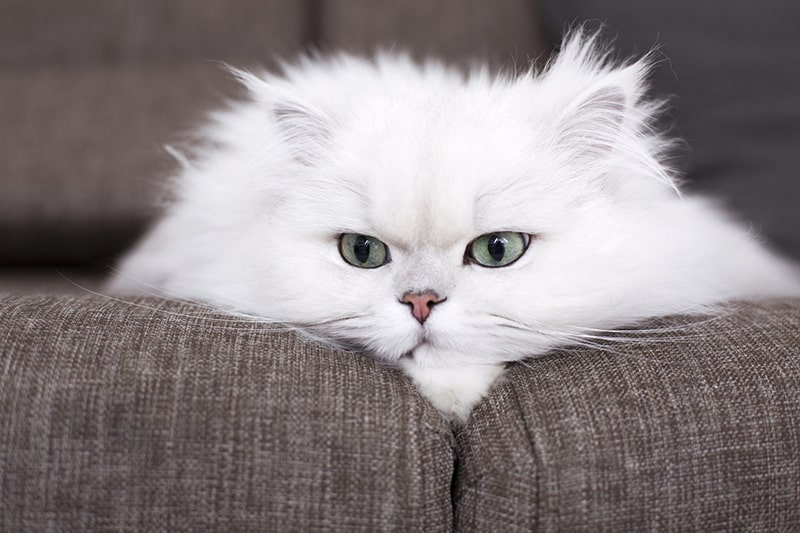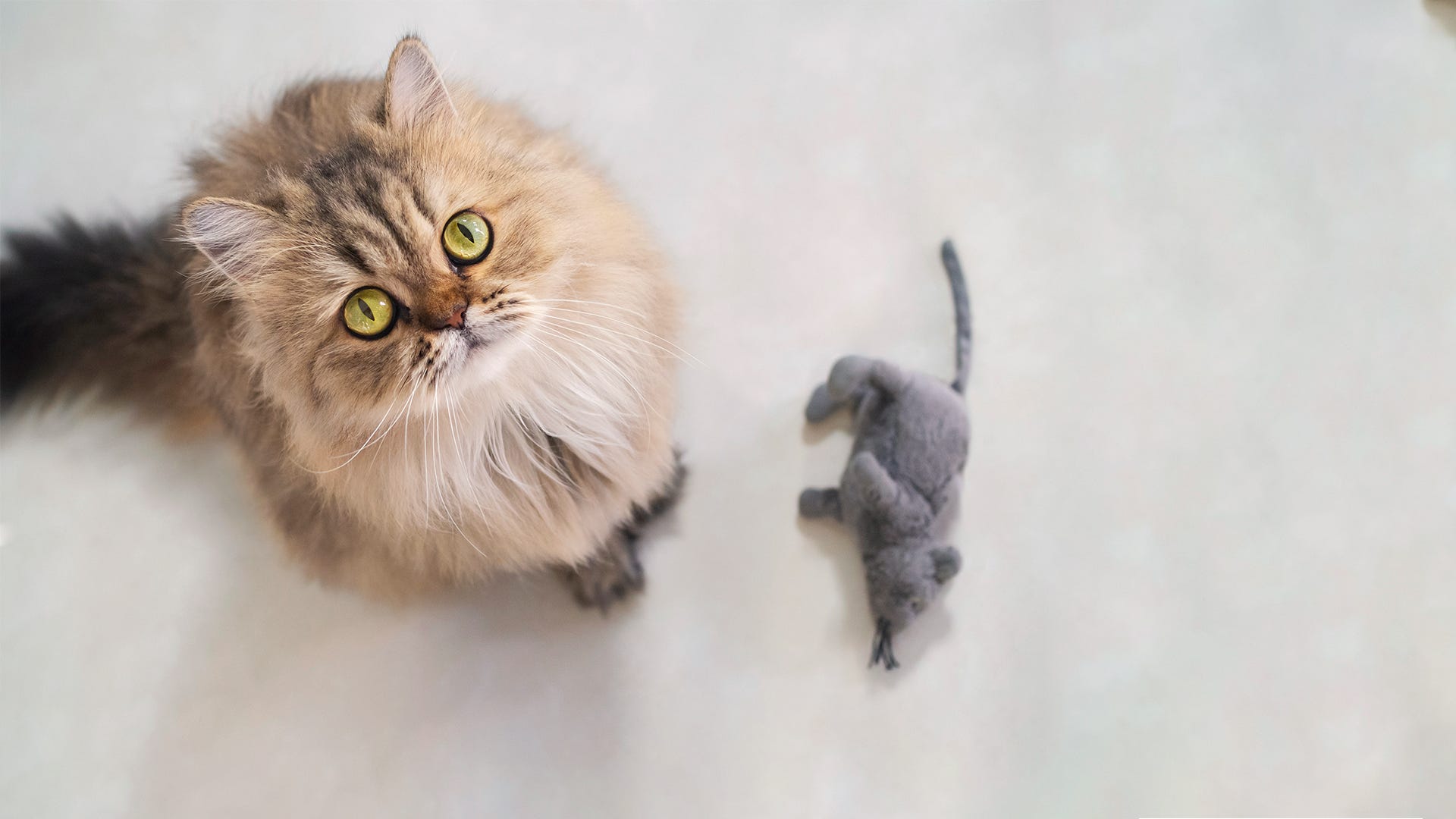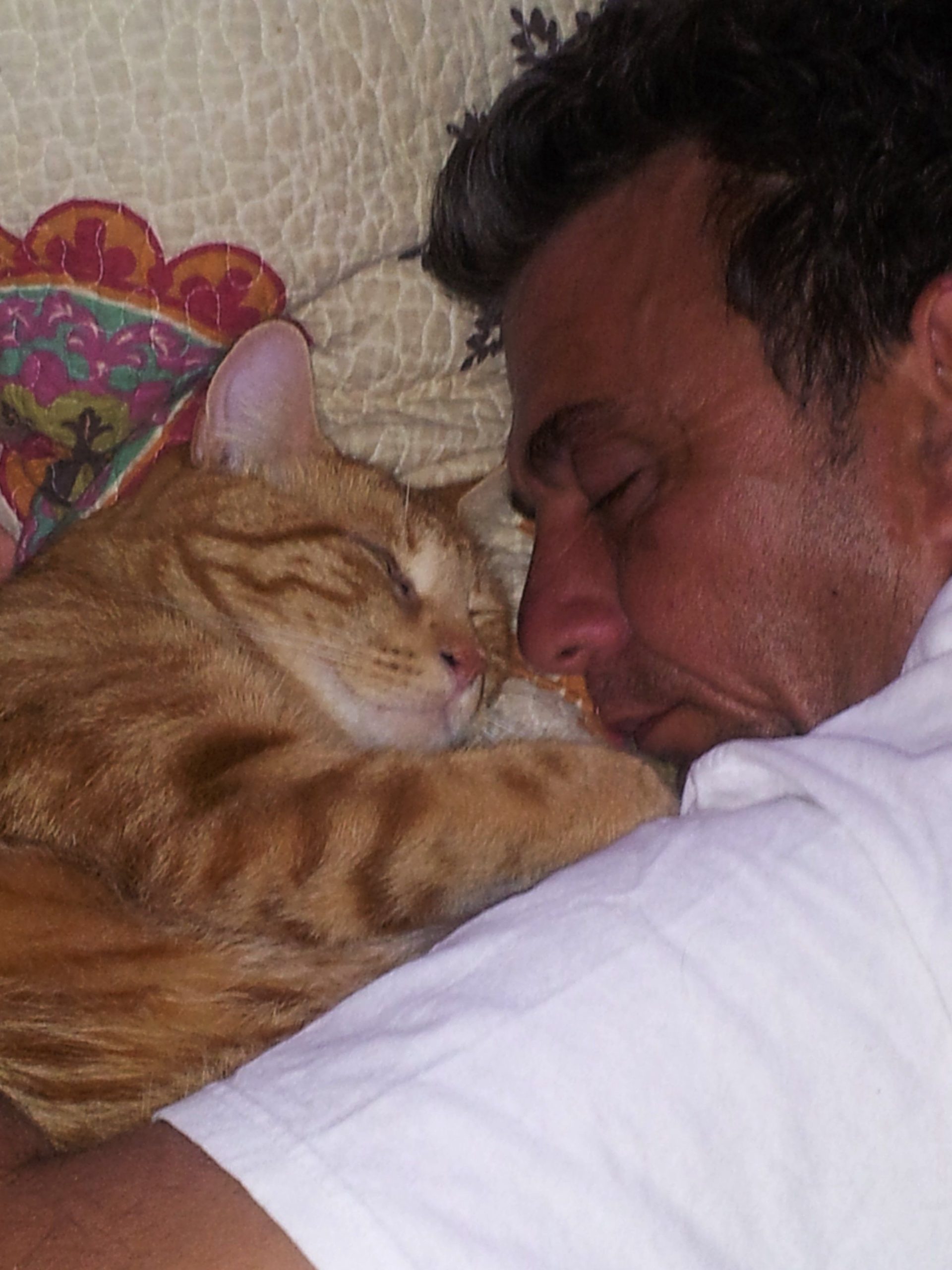Contents
- I. Introduction to Persian Cats
- II. Understanding Persian Cat Behavior
- III. Signs of Aggression in Persian Cats
- IV. Common Misconceptions about Persian Cats
- V. How to Properly Socialize a Persian Cat
- VI. Frequently Asked Questions about Persian Cats
- 1. What is the origin of Persian cats?
- 2. What is the appearance of Persian cats?
- 3. Are Persian cats high-maintenance?
- 4. Do Persian cats have any specific health issues?
- 5. Are Persian cats good with children and other pets?
- 6. How long do Persian cats live?
- 7. Are Persian cats indoor or outdoor pets?
- 8. Do Persian cats require a special diet?
- 9. Are Persian cats vocal?
- 10. Do Persian cats need a lot of exercise?
- VII. Do Persian Cats make good pets for children?
- VIII. Are Persian Cats prone to health issues?
- IX. What is the average lifespan of a Persian Cat?
I. Introduction to Persian Cats

Persian cats are one of the most popular and beloved cat breeds in the world. Known for their long, luxurious fur, sweet temperament, and expressive eyes, they have captured the hearts of cat lovers everywhere. In this article, we will delve into the world of Persian cats and explore their unique characteristics and traits.
A. History and Origin
The history of Persian cats can be traced back to ancient Persia, which is present-day Iran. They were initially brought to Europe in the 17th century by travelers and quickly gained popularity among the aristocracy. Their regal appearance and calm nature made them highly sought after as pets and show cats.
B. Physical Appearance
Persian cats are known for their distinctive features. They have a round face with a short nose and large, expressive eyes. Their most prominent feature is their long, flowing coat, which comes in a variety of colors and patterns. Their body is medium-sized, with a sturdy build and a thick, fluffy tail.
C. Temperament and Personality
Persian cats are known for their calm and gentle nature. They are typically laid-back and enjoy a relaxed lifestyle. They are affectionate and enjoy being around their human companions. While they may not be as active or playful as some other cat breeds, they make up for it with their loving and docile temperament.
D. Care and Maintenance
Due to their long fur, Persian cats require regular grooming to keep their coat healthy and tangle-free. Daily brushing is recommended to prevent matting and hairballs. It is also important to clean their eyes and ears regularly to prevent any infections. Persian cats are indoor cats and should be kept in a safe and secure environment.
E. Health Issues
Like all cat breeds, Persian cats are prone to certain health issues. One of the most common problems they face is respiratory difficulties due to their flat face. They may also suffer from eye problems, such as excessive tearing and entropion. Regular veterinary check-ups and a balanced diet are essential to ensure their overall well-being.
In conclusion, Persian cats are a beautiful and gentle breed with a rich history and unique characteristics. Their long, luxurious fur and sweet temperament make them a popular choice among cat lovers. However, they require regular grooming and care to keep them healthy and happy. If you are looking for a calm and loving companion, a Persian cat may be the perfect addition to your family.
II. Understanding Persian Cat Behavior

Persian cats are known for their unique behavior traits, which set them apart from other cat breeds. To truly understand your Persian cat’s behavior, it’s essential to delve into their instincts, habits, and communication methods. Here, we explore the fascinating world of Persian cat behavior.
1. Social Nature
Persian cats have a social nature and enjoy the companionship of their human family members. They thrive in a loving and caring environment where they can receive attention and affection. These cats love to be part of the family’s day-to-day activities and are known for their loyalty and devotion.
2. Independent Personality
Despite their social nature, Persian cats also possess an independent streak. They appreciate having their personal space and may occasionally retreat to a quiet corner or a cozy spot for some alone time. It’s important to respect their need for solitude and not force them into interactions when they prefer to be alone.
3. Gentle Demeanor
Persian cats are renowned for their gentle and laid-back demeanor. They tend to be calm, relaxed, and non-aggressive, making them great companions for families with young children or other pets. Their peaceful nature makes them less likely to engage in rough play or aggressive behavior.
4. Affectionate Behavior
Persian cats are famous for their affectionate behavior. They enjoy being petted, cuddled, and showered with love and attention. Many Persian cats are lap cats and love to curl up in their owner’s lap for a cozy snuggle session. Their desire for affection makes them fantastic companions for individuals seeking a loving and devoted pet.
5. Playful Nature
Despite their relaxed personality, Persian cats also have a playful side. They enjoy interactive play sessions with toys, chasing laser pointers, or playing with feather wands. Providing them with engaging toys and regular playtime helps keep them mentally and physically stimulated, preventing boredom and potential behavioral issues.
6. Communication Methods
Persian cats communicate through various methods to express their needs, emotions, and desires. They may vocalize through different types of meows, purring, or chirping sounds. Additionally, they use body language, such as tail movements, ear positions, and eye expressions, to convey their feelings. Understanding these communication signals is crucial for establishing a strong bond with your Persian cat.
III. Signs of Aggression in Persian Cats

Persian cats are known for their calm and gentle nature, but like any other feline, they can display aggressive behavior in certain situations. Understanding the signs of aggression in Persian cats is essential for providing them with the appropriate care and ensuring a harmonious environment for both the cat and its human companions.
1. Body Language
One of the first signs of aggression in Persian cats can be observed through their body language. When a Persian cat feels threatened or annoyed, it may arch its back, puff up its fur, and position its ears backward. Additionally, it may growl, hiss, or bare its teeth as a warning sign. It is important to recognize these signals to avoid any potential conflict.
2. Tail Movements
The movement of a Persian cat’s tail can also indicate aggression. If the cat’s tail starts twitching or wagging rapidly, it may be a sign of frustration or agitation. Conversely, if the tail is raised and held stiffly, it could indicate the cat’s readiness to attack. Monitoring the tail movements can provide valuable insights into the cat’s emotional state.
3. Aggressive Posture
When a Persian cat becomes aggressive, it may adopt a defensive or offensive posture. The cat may crouch down, ready to pounce on its target, or it may stand tall with its front legs slightly lifted off the ground. It is crucial to be cautious when approaching a cat displaying such behavior to avoid any potential harm.
4. Excessive Vocalization
Persian cats usually have a calm and quiet demeanor, but when they are aggressive, they may engage in excessive vocalization. They may yowl, howl, or make loud growling noises to express their anger or territoriality. Unusual and persistent vocalization can be an indication of underlying aggression.
5. Destructive Behavior
Aggression in Persian cats can also manifest through destructive behavior. They may scratch furniture, bite cords, or engage in other destructive activities as a way to release their frustration. Providing them with appropriate outlets for their energy and mental stimulation can help prevent such destructive behavior.
It is important to note that aggression in Persian cats can be caused by various factors, including fear, stress, pain, or territoriality. If the aggression persists or intensifies, it is recommended to consult with a veterinarian or a professional animal behaviorist to address the issue and develop a suitable management plan.
IV. Common Misconceptions about Persian Cats

Persian cats are known for their luxurious coats, gentle personalities, and stunning appearance. However, there are several common misconceptions about these beautiful felines that need to be addressed.
1. Persian cats are high-maintenance
While it’s true that Persian cats require regular grooming to maintain their coat’s health and prevent matting, they do not necessarily require excessive maintenance. With a proper grooming routine and regular veterinary check-ups, the grooming process can be enjoyable for both the cat and its owner.
2. Persian cats are aloof and unfriendly
Contrary to popular belief, Persian cats are not aloof or unfriendly. They may have a calm and reserved demeanor, but they can be incredibly affectionate and loving towards their owners. They enjoy spending quality time with their human companions and are known for their gentle nature.
3. Persian cats are lazy and inactive
While Persian cats may not be as active as some other breeds, it is a misconception to label them as lazy or inactive. They appreciate a calm and peaceful environment, but they still enjoy playtime and interactive toys. Regular exercise and mental stimulation are important for their overall well-being.
4. Persian cats are prone to health issues
It is true that some Persian cats may be predisposed to certain health issues, such as respiratory problems and eye conditions. However, with proper care, regular veterinary check-ups, and a healthy diet, many of these health concerns can be minimized or prevented. Responsible breeding practices also play a significant role in reducing the likelihood of predisposed conditions.
5. Persian cats are difficult to train
Training a Persian cat requires patience and consistency, but it is not impossible. With positive reinforcement techniques and reward-based training, Persian cats can learn basic commands and even some fun tricks. They are intelligent felines and can be trained just like any other breed.
V. How to Properly Socialize a Persian Cat

Socializing a Persian cat is an essential aspect of ensuring their well-being and happiness. These adorable felines may have a reputation for being aloof, but with the right approach, they can become loving and sociable companions. Here are some tips on how to properly socialize a Persian cat:
1. Start Early
The key to successful socialization is to start early. Begin introducing your Persian kitten to different people, animals, and environments as soon as possible. This will help them become accustomed to new experiences and prevent them from developing fear or anxiety.
2. Gradual Exposure
When introducing your Persian cat to new people or environments, do it gradually. Start with short and positive interactions, gradually increasing the duration and intensity. This will help your cat feel more at ease and prevent overwhelming situations.
3. Positive Reinforcement
Use positive reinforcement techniques to reward your Persian cat for good behavior during socialization. Treats, praise, and playtime can all be effective ways to encourage them to feel more comfortable around new people and situations.
4. Gentle Handling
Handle your Persian cat gently and with care. This breed is known for its sensitive nature, so it’s essential to be patient and understanding. Avoid any rough or aggressive handling, as it can cause them to become fearful or defensive.
5. Enrichment Activities
Provide your Persian cat with plenty of enrichment activities to keep them mentally stimulated and socialized. Interactive toys, scratching posts, and climbing trees can all help to engage their curiosity and encourage healthy social behaviors.
6. Playdates
Arrange playdates with other friendly and well-socialized cats. This can help your Persian cat learn appropriate social cues and behaviors. Supervise the interactions to ensure they are positive and gradually increase the duration and frequency of these playdates.
7. Patience and Consistency
Socialization is a gradual process that requires patience and consistency. Be patient with your Persian cat and allow them to progress at their own pace. Consistency in your approach will help them feel secure and build trust over time.
8. Professional Help
If you’re struggling with socializing your Persian cat or encountering behavioral issues, consider seeking professional help from a veterinarian or animal behaviorist. They can provide expert guidance and support tailored to your cat’s specific needs.
By following these tips, you can ensure that your Persian cat becomes a well-socialized and happy member of your family. Remember, each cat is unique, so be flexible and adapt your approach accordingly. With love, patience, and positive reinforcement, your Persian cat can overcome any shyness or timidity and thrive in their social interactions.
VI. Frequently Asked Questions about Persian Cats
Curious about Persian cats? Here are some frequently asked questions about these beautiful and mysterious felines:
1. What is the origin of Persian cats?
Persian cats have a long and rich history tracing back to ancient Persia (modern-day Iran). They were highly regarded and even considered sacred by some cultures.
2. What is the appearance of Persian cats?
Persian cats are known for their distinctive features, including their long, luxurious coats, round faces, and expressive eyes. They come in a variety of colors and patterns, making each one unique.
3. Are Persian cats high-maintenance?
Yes, Persian cats require regular grooming to keep their coats tangle-free and healthy. Their long hair needs to be brushed daily and they may also need occasional professional grooming.
4. Do Persian cats have any specific health issues?
Yes, Persian cats are prone to certain health issues, such as breathing difficulties due to their flat faces, eye problems, and kidney disease. Regular vet check-ups are essential to ensure their well-being.
5. Are Persian cats good with children and other pets?
Persian cats are generally gentle and friendly, making them suitable companions for children. However, they can be a bit reserved and may take time to warm up to new pets in the household.
6. How long do Persian cats live?
On average, Persian cats have a lifespan of 12 to 16 years. With proper care, some can even live beyond 20 years, making them long-term companions for their owners.
7. Are Persian cats indoor or outdoor pets?
Due to their long coats and gentle nature, Persian cats are more suited to indoor living. They may struggle with extremes of weather and are generally safer from outdoor hazards when kept indoors.
8. Do Persian cats require a special diet?
While Persian cats do not have specific dietary requirements, it is important to feed them a balanced and nutritious diet. Consult with your veterinarian to choose the right food for your Persian cat.
9. Are Persian cats vocal?
Yes, Persian cats can be quite vocal and may communicate with their owners through meowing, chirping, or purring. However, each cat has its own unique personality, and some may be quieter than others.
10. Do Persian cats need a lot of exercise?
Persian cats are not known for being highly active and may prefer calm and quiet environments. While they don’t require intense exercise, providing them with interactive toys and occasional playtime can help keep them mentally stimulated.
Now that you have some insight into the frequently asked questions about Persian cats, you can better understand these lovely creatures and provide them with the care they deserve.
VII. Do Persian Cats make good pets for children?
When it comes to choosing a pet for your children, the Persian cat is often a popular choice. Known for their luxurious coats and charming personalities, Persian cats can make wonderful companions for kids. However, it’s important to consider a few factors before bringing a Persian cat into a household with children.
1. Temperament and Personality
Persian cats are generally known for their calm and gentle nature. They are usually not very active and prefer a relaxed and quiet environment. This makes them well-suited for children who are also calm and gentle. However, it’s important to teach children how to handle the cat with care and respect its boundaries.
2. Grooming Needs
Persian cats have long, thick fur that requires regular grooming. This can be a great opportunity for children to learn about responsibility and caring for another living being. However, it’s important to supervise young children during grooming sessions to ensure that they don’t accidentally hurt the cat or pull its fur too hard.
3. Health Concerns
Like any other breed, Persian cats can have specific health issues. They are prone to respiratory problems due to their short noses and can be more sensitive to extreme temperatures. It’s important to consult with a veterinarian to ensure that your cat is healthy and to educate your children about any specific needs or potential risks.
4. Allergies
Some children may have allergies to cat dander, and Persian cats are no exception. It’s important to consider if any family members have allergies before bringing a Persian cat home. You can also consult with an allergist to determine if there are any preventive measures that can be taken to minimize the risk of allergic reactions.
5. Supervision and Interaction
While Persian cats can be great companions for children, it’s important to supervise their interactions to ensure the safety of both the cat and the child. Teach your children how to properly pet and play with the cat, and always monitor their interactions to prevent any accidents or harm.
VIII. Are Persian Cats prone to health issues?
Persian cats are known for their beautiful long coats, adorable flat faces, and calm demeanor. While they are undeniably stunning, it is important to be aware of the potential health issues that they may face throughout their lives. Persian cats require extra care and attention to ensure they live a healthy and happy life.
1. Respiratory Problems
One of the most common health issues faced by Persian cats is respiratory problems. Their flat faces and shortened nasal passages make them more susceptible to breathing difficulties. This can lead to issues such as snoring, wheezing, and difficulty in regulating body temperature.
2. Eye Conditions
Persian cats have large, round eyes that are prone to certain eye conditions. They can be more susceptible to conditions such as cherry eye, entropion (inward rolling of the eyelids), and excessive tearing. Regular eye check-ups and proper grooming can help prevent and manage these conditions.
3. Dental Problems
Due to their brachycephalic (flat-faced) structure, Persian cats may have dental issues. Crowded teeth, misalignment, and gum disease are common problems. Regular dental care, including brushing their teeth, can help maintain their oral health.
4. Polycystic Kidney Disease
Polycystic Kidney Disease (PKD) is a genetic condition that is prevalent in some Persian cats. This disease causes the formation of cysts in the kidneys, which can lead to kidney failure. Responsible breeders now screen their cats for PKD, so it is essential to obtain a Persian cat from a reputable source.
5. Obesity
Persian cats are prone to obesity due to their sedentary nature and love for food. It is crucial to monitor their diet, provide them with regular exercise, and avoid overfeeding to prevent obesity-related health issues such as diabetes and joint problems.
Despite these potential health issues, it is important to note that not all Persian cats will experience them. Regular veterinary check-ups, a balanced diet, proper grooming, and a loving home environment can greatly contribute to their overall well-being and minimize the risks of developing these health issues.
IX. What is the average lifespan of a Persian Cat?
Persian cats are known for their luxurious coats and calm, gentle nature. They are one of the oldest and most popular cat breeds in the world. If you are considering adding a Persian cat to your family, you may wonder about their average lifespan. Let’s explore the factors that contribute to their lifespan and how you can ensure they live a long and healthy life.
1. Genetics and Health
The average lifespan of a Persian cat can range from 12 to 16 years, but some have been known to live even longer. Like all living beings, genetics play a significant role in determining their lifespan. If the cat comes from a line of healthy ancestors with no genetic predispositions to certain diseases, they are more likely to live a longer life. Regular veterinary check-ups, vaccinations, and a nutritious diet are crucial in maintaining their health.
2. Environment and Lifestyle
The environment in which a Persian cat lives also affects its lifespan. Cats that are kept indoors tend to live longer due to reduced exposure to diseases, accidents, and predators. Providing a safe and stimulating environment for your Persian cat will help prevent accidents and ensure their overall well-being. Regular exercise and mental stimulation are also important for a longer lifespan.
3. Diet and Nutrition
A balanced and nutritious diet is vital for the longevity of a Persian cat. Feeding them high-quality cat food that meets their nutritional needs will help prevent obesity and associated health issues. Avoid overfeeding or feeding them unhealthy human food, as this can lead to digestive problems, obesity, and a shorter lifespan. Consult your veterinarian for specific dietary recommendations tailored to your Persian cat’s needs.
4. Grooming and Hygiene
Proper grooming is essential for Persian cats due to their long, dense coats. Regular brushing helps prevent matting and tangling, which can lead to skin infections. Keeping their eyes and ears clean and free from debris is also important. Regular grooming sessions not only maintain their beautiful appearance but also promote good health and reduce the risk of infections.
5. Emotional Well-being
Persian cats thrive in a calm and stress-free environment. They are sensitive to changes in their surroundings and can become anxious or depressed if subjected to constant noise, chaos, or neglect. Providing them with a quiet and comfortable space, plenty of affection, and engaging activities will contribute to their emotional well-being and overall lifespan.

Jackson is an accomplished content writer with a flair for captivating storytelling. With a Bachelor’s degree in English Literature from the prestigious University of California, Berkeley, Hunter’s educational background has honed his writing skills to perfection. His love for felines is evident in his extensive knowledge of cat behavior and care, making him an expert in the field. Hunter’s passion for cats has led him to contribute insightful articles to various online platforms, providing valuable information and tips to cat owners worldwide. With his exceptional writing abilities and deep understanding of cats, Hunter continues to create engaging content that resonates with readers and leaves a lasting impact.
